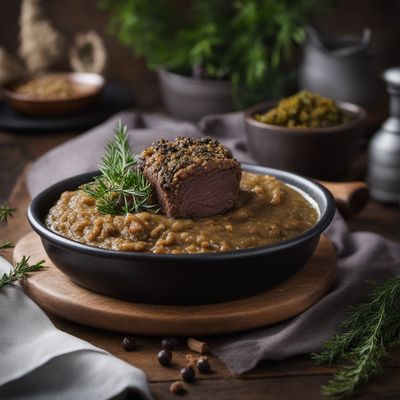
Dish
Haggis
Haggis has a savory, slightly spicy flavor and a crumbly texture. It is typically served with neeps and tatties (turnips and potatoes), and can be accompanied by a variety of sauces. Haggis is a high-protein dish that is also rich in iron and other nutrients.
Origins and history
Haggis has been a part of Scottish cuisine for centuries, and is often associated with the celebration of Burns Night, a holiday honoring the poet Robert Burns. The dish has also been popularized in other parts of the world, such as Canada and the United States.
Dietary considerations
Haggis is not suitable for vegetarians or vegans. It is also not recommended for individuals with liver or cholesterol problems.
Variations
There are many variations of haggis, including vegetarian and vegan versions that use plant-based ingredients instead of meat. Some recipes also include additional spices or flavorings, such as whiskey or mustard.
Presentation and garnishing
Haggis is traditionally presented on a platter, with neeps and tatties on the side. It can be garnished with fresh herbs or a drizzle of gravy.
Tips & Tricks
When preparing haggis, it is important to cook it slowly and gently to ensure that it is fully cooked and has a tender texture. It should be served hot, and leftovers can be reheated in the oven or microwave.
Side-dishes
Haggis is typically served with neeps and tatties (turnips and potatoes), but can also be accompanied by other side dishes such as roasted vegetables or mashed potatoes. It is often served with a gravy or sauce made from the cooking juices.
Drink pairings
Haggis pairs well with a variety of beers and whiskies, particularly those from Scotland. It can also be paired with a full-bodied red wine.
Delicious Haggis recipes
More dishes from this category... Browse all »

Anticucho de corazon
Peruvian cuisine

Balkenbrij
Dutch cuisine

Boulfaf
Moroccan cuisine

Bouzellouf
Algerian cuisine

Brački vitalac
Croatian cuisine

Bruckfleisch
Swiss cuisine

Budino di cervella
Italian cuisine

Callos a la Madrileña
Spanish cuisine




